Monday 11 July
FELBRIGG HALL
The first visit was to this National Trust property to visit the walled garden. We were divided into two groups each with a gardener to take us round. Ours began by outlining the long history of the garden describing the many changes that had taken place before the National Trust took it on and those they had done since.
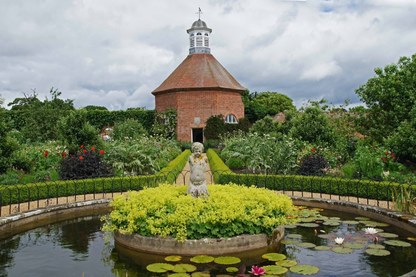
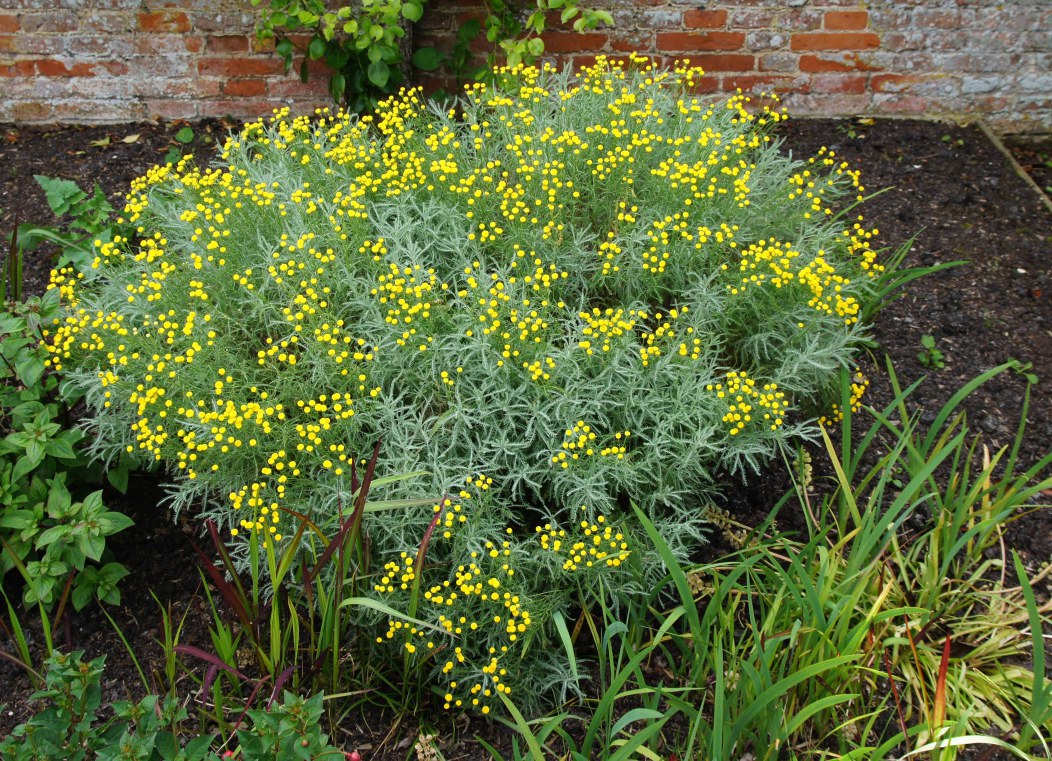
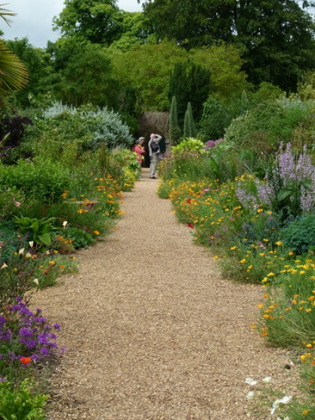
It is a well structured garden with a variety of different areas and beds from formal to informal and from flowers and shrubs to vegetables, soft fruit and fruit trees. I preferred the less formal beds where plants have been allowed to grow closely together and spill over onto the paths and also the herb bed.
A key reason the garden flourishes is its location, south facing and with extensive woodland adding extra protection to the north giving it its own microclimate. This was well demonstrated by the flourishing Echium pininana, native to the Canaries. There were lots of seedlings and I was given a couple to take away. It will be interesting to see how they do in my gardens in Cambridge and France.
Lunch (soup and sandwiches) was provided in the café and to my delight there were crab sandwiches – not surprising given the proximity to Cromer – a real treat!
THORPLAND HALL
Following lunch we travelled to Thorpland Hall, a private garden owned by Annabel and Nigel Savory. Set in the Stiffkey valley the current house dates from Tudor times although the site has been occupied since the Romans. It is surrounded by 6 acres of gardens including a walled kitchen garden, formal gardens and woodland. We began our tour with a short talk from Nigel about the history of the house and garden. The original gardens were laid out in the 18th and 19th centuries but developments since the 1960s were undertaken by the current owner’s parents and then by his wife and himself.
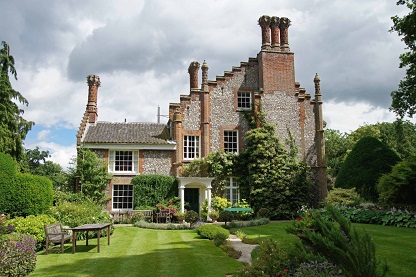
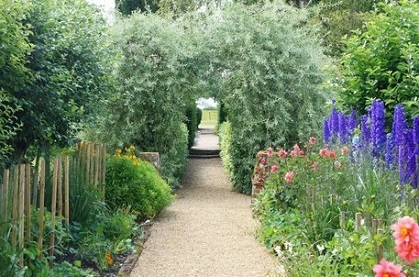
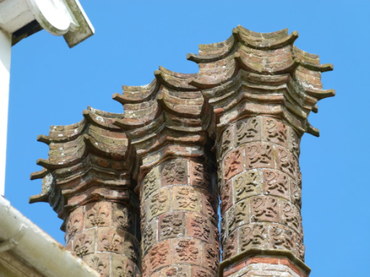
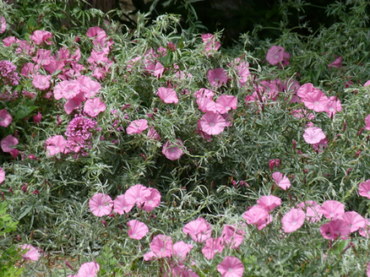
This is a very personal lived in and loved garden with a lot of more recent planting. Annabel is the main gardener and this personal connection showed. The garden is cleverly designed with lots of flowers, shrubs and trees so plenty of colour, shape and movement. There is some very intriguing planting in the woodland area and a cleverly designed central paved path in the formal garden adjacent to the house, bordered with a number of Mediterranean plants. The walled garden is beautiful too with beds edged by catmint (Nepeta) and a wonderful long bed combining delphiniums, dahlias, Gaura (Oenothera lindheimeri) and nasturtiums (Tropaeolum). Last but not least it has an enviable vegetable and fruit area overflowing with a wide range of produce which we were told keeps the family supplied all year round.
CORPUSTY MILL
This is a very different private garden owned by Roger Last who took us round. The site has been occupied since the Anglo-Saxons with a mill on the site from before 1066. The current mill dates from the 17th century. During the first half of the last century it was let and fell into disrepair. Roger’s parents bought the house in 1947 and Roger and his brother John began in 1963 to transform it into the unique place it is today.
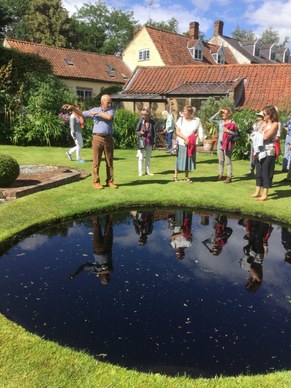
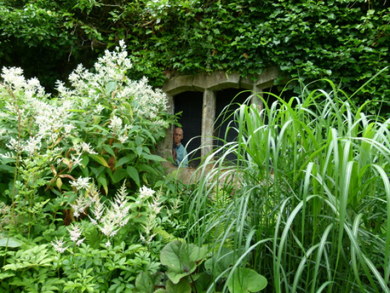
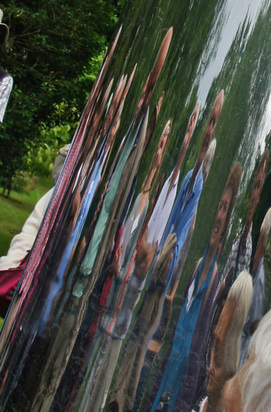
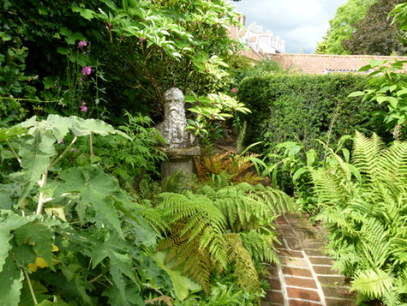
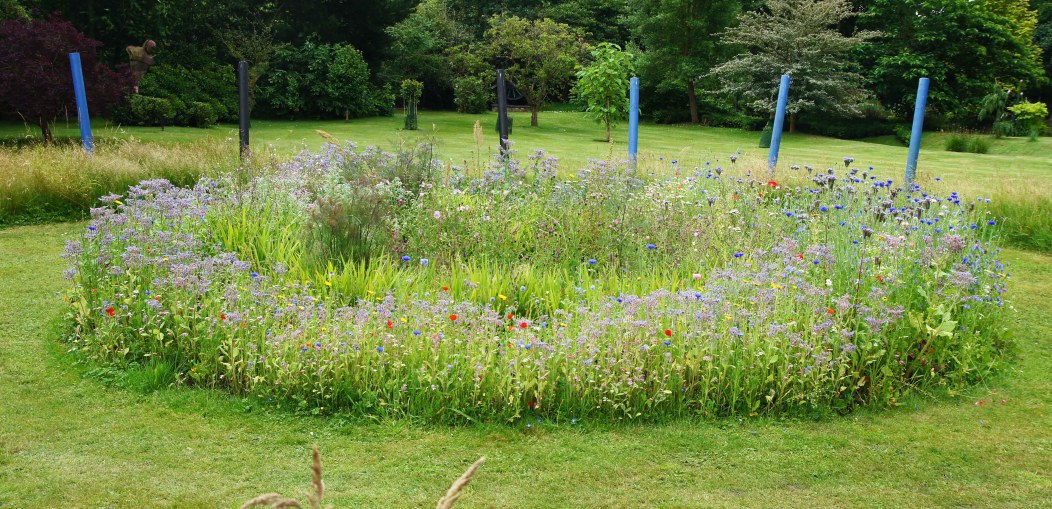
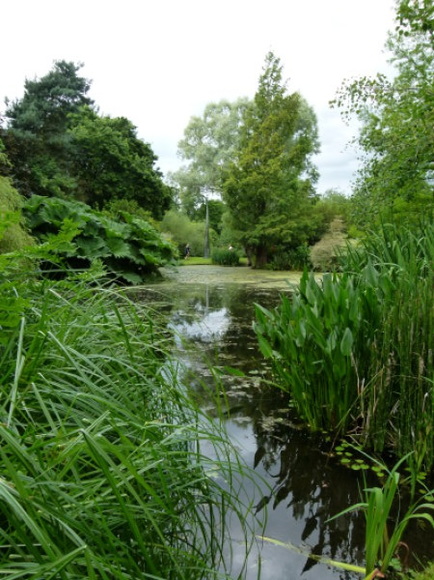
The garden is divided into three parts each with its own feel and all taking advantage of the basic low-lying topography and proximity to water. It has interesting shapes, topiary and carefully designed and positioned brick and flint structures, with several tricks and follies. The first part is the most developed and complex containing a number of separate ‘rooms’ or areas. Curves predominate. Areas are linked by shady woodland paths. Scattered throughout are unique structures including an eerie grotto, a ruined tower with an altar, a stainless steel 7-metre spire and white statues. Among the several water features one in the walled formal area is dark grey and beige running with blue-black water in the pool and fountain.
The second part encompasses water meadows with trees, ponds, a rill, bridges and a range of fascinating sculptures. The final area, the most recent, dates from 1966 when 300 poplar trees were felled.
This is an exceptional garden with an intriguing and sometimes dark humour about it
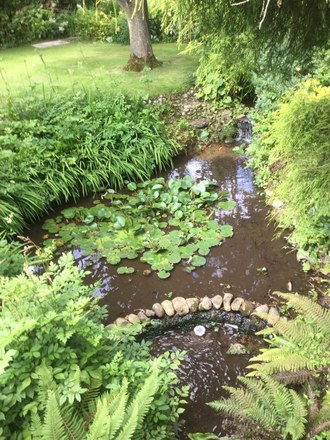
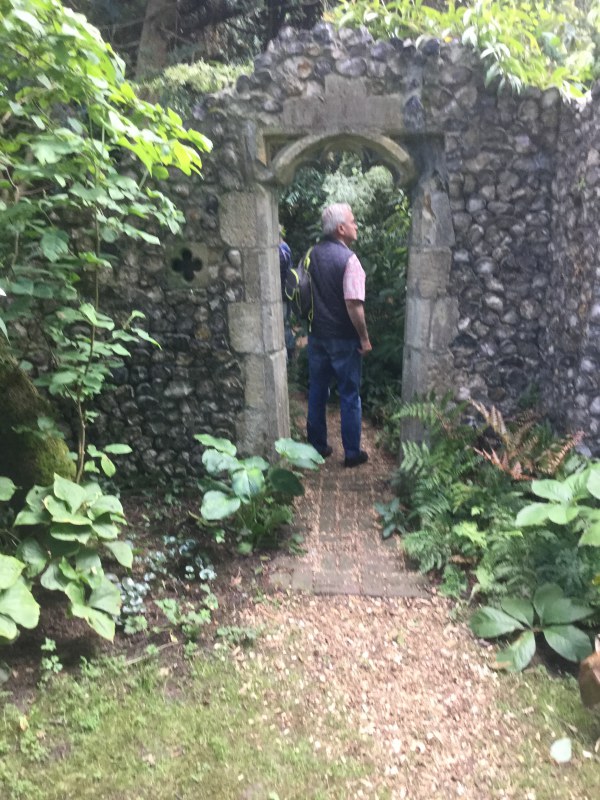
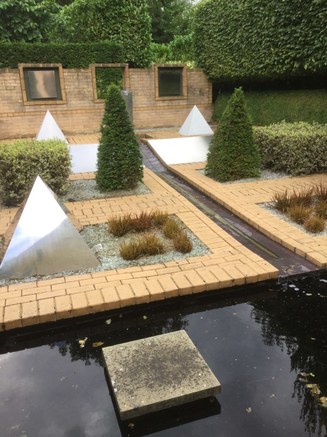
LECTURE “What is so special about Mediterranean-climate plants?” – Timothy Walker

We returned to the hotel for a lecture by Timothy Walker the distinguished botanist, formerly the director of the University of Oxford Botanic Garden and now stipendiary lecturer in plant sciences at Somerville College, Oxford. He based his fascinating and amusing talk on his 12 years of experience taking students on field trips to the Algarve and the Canaries, and his other extensive travels. His knowledge and ability to communicate were breathtaking. I had heard him before but was even more impressed with this lecture which appealed both to those with in-depth knowledge and those like myself who are enthusiastic but somewhat lazy amateurs. He concluded by enjoining us ‘to go now before it is too late’ to visit the wonderful Mediterranean-climate areas he had shown us.

